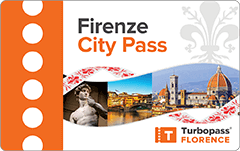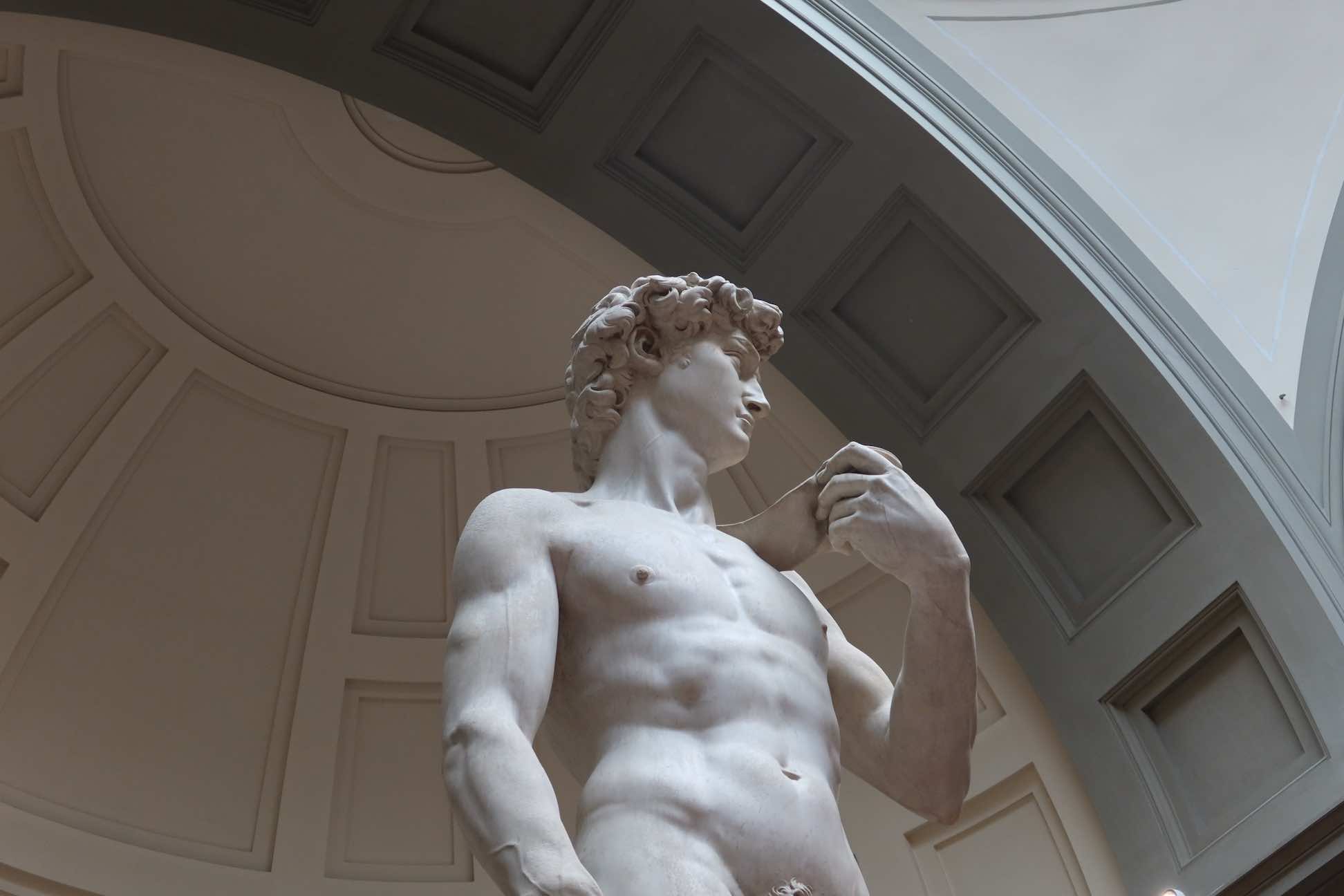- Sign up & get a FREE ebook Subscribe Today!
- Florencewise Home Page
- churches in florence
- basilica of san lorenzo
Visit the Majestic Basilica of San Lorenzo in Florence
Are you planning an unforgettable trip to Florence?
If so, you'll want to learn about the glorious Basilica of San Lorenzo (and the adjoining Medici Chapels!).
 The Basilica of San Lorenzo is one of the most important churches in the city and absolutely should be on your itinerary!
The Basilica of San Lorenzo is one of the most important churches in the city and absolutely should be on your itinerary!Everything you need to know about visiting the Basilica San Lorenzo in Florence
Now, there’s a lot to love about Florence.
From the stunning works of art at the Uffizi Gallery to the lush greenery of the Boboli Gardens, the entire city is a feast for the eyes.
But to learn more about the city's ecclesiastical and architectural history, you must visit the Basilica of San Lorenzo.
This iconic church is a testament to the life of the famed Medici family and boasts design work from Brunelleschi to Michelangelo.
In short, it’s an absolute bucket list spot for any culture lover.
On this page, we'll be covering:
- The history of the Basilica di San Lorenzo
- The architecture of the Basilica
- Special things to see inside the Basilica
- The Medici chapels
- Opening hours and mass times
- Practical visit information
The history of the Basilica of San Lorenzo
The Basilica of San Lorenzo is an iconic Florentine church with a history of over a thousand years.
While it was technically consecrated in 393 CE as a dedication to Saint Ambrogio, it was renovated during the Romanesque period in 1059.
It’s situated right at the center of the city’s market district and was the city’s official cathedral until it was transferred to Santa Reparata, now the Florence Duomo.
After it stood untouched for a few centuries, San Lorenzo became the parish church of the Medici family (led by Giovanni di Bicci de ‘Medici).
 The central dome of the basilica is a riot of color, contrasting with the white and grey of the rest of the interior
The central dome of the basilica is a riot of color, contrasting with the white and grey of the rest of the interiorGiovanni commissioned Filippo Brunelleschi to rebuild and redesign the church in the 15th century.
Unfortunately, inadequate funds slowed construction and meant the original design had to be rejigged.
It was so slow that Brunelleschi died before he could complete it.
Believe it or not, the right-hand aisles of the chapel were still being built until the 1490's and the facade was never completed.
Despite the slow-moving construction period, the Medici family funded the entire reconstruction and paid for most of the artwork inside.
But don’t worry, we’ll get to that!
The interior architecture
While the church's exterior might not look overly inviting, the interior is marvelous.
It’s an excellent example of ecclesiastical Renaissance architecture that incorporates classical elements like columns and arches.
The aisle columns feature smooth Roman shafts, while the pilasters incorporate fluted patterning you might find in traditional Greek architecture.
Brunelleschi wished to keep the structure mathematical to create perfect geometric proportions across the church.
So, you'll spot a series of squares and rectangles that line the ceilings and floors.
You'll also want to keep an eye out for balustrades and polychromatic marble by the main altar.
Striking Corinthian columns and round arches separate the aisles from the nave, which is bright white and covered by a coffered ceiling with rosettes.
The basilica is largely built from a grey sandstone called pietra serena (typical for most Renaissance buildings!), which beautifully contrasts against the white plaster.
The church's façade wasn't meant to be incredibly bare and unfinished.
When Brunelleschi died, Pope Leo X (who also happened to be a Medici) decided to hold a competition to design a glorious facade for the Basilica.
Michelangelo submitted plans for a facade in white Carrara marble in 1518 and constructed a striking wooden model showing the exact proportions of the façade.
However due to a lack of money and change in trends it was never built.
You can see Michelangelo’s original wooden model in the Casa Buonarroti museum in Florence.
It’s just 5 minutes from the Basilica di Santa Croce and I highly recommend checking it out!
Special things to see inside
While the entire church of San Lorenzo is striking, the Old Sacristy is a must-see.
It’s loaded with decorative, sculptural details that the Italian sculptor Donatello designed.
The entrance door is incredibly intricate, and you'll spot bronze and polychrome stuccos and two arched reliefs above the altar doors.
The decorations and sculptures depict the life of St. John, the Resurrection of Druisiana, and the Martyrdom of St. John (which is a Mannerist study of the human body).
If you look closely at the small dome above the altar, you’ll see astrological depictions of constellations.
Although the Old Sacristy is gorgeous, it’s also the burial place of Giovanni di Bicci, his wife Piccarda Boeri, and Piero the Gouty.
You’ll see a funerary monument dedicated to Piero and Giovanni di Bicci (AKA: the sons of Cosimo il Vecchio) made from marble, serpentine, and bronze.
The impressive monument is undoubtedly worth seeing!
Aside from the impressive structural design, stunning frescoes and statues line the walls of the chapels.
Among the best works of art are Filippo Lippi’s 'Annunciation' in the Martelli Chapel and a 1964 painting by Pietro Annigoni.
If you have more time, head to the San Lorenzo Cathedral Treasure Museum.
It's housed in medieval underground rooms and presents religious relics, works of art, and Renaissance and Baroque silver and gold pieces.
You'll also find the Sacro Catino (otherwise known as the Holy Grail) among the priceless artwork.
Said to be used by Christ during the Last Supper, this impressive emerald basin is worth queuing up for!
🤙 Roaming in Italy? 📱
Get yourself an Italian eSIM for calls, messages and data when traveling here.
Save on data charges with plans from just 19€ from Holafly - our recommended eSIM provider - click here to find out more.
The Medici Chapel
The Medici Chapels adjoin the Church of San Lorenzo and belong to the collection of the Bargello Museums.
The Medici Chapel area is separate from the main church and combines three distinctive sections: the crypt, the Chapel of the Princes, and the New Sacristy.
Pope Leo X of the Medici family first conceived the idea of a family mausoleum in 1520 and appointed Michelangelo to begin working on the New Sacristy.
The pope wanted a dedicated burial spot for essential members of the Medici family, including Lorenzo the Magnificent, Lorenzo the Duke of Urbino, and Giuliano the Duke of Nemours.
The Crypt
The crypt is the first of four sections inside the Medici Chapel complex and contains the tombs of the Medici grand dukes and their families.
This includes Cosimo I, Giancarlo de’ Medici, and the last Medici heir, Anna Maria Luisa.
Check out our top tips for making the most of your time in Florence:
The Chapel of the Princes
Once you've seen the crypt, you'll head through to the very lavish Cappella dei Principi.
This stunning room is well-regarded for its octagonal floor and monumental family tomb decorated with polychrome marble and semi-precious stones.
Along with six cenotaphs carved into the granite, you'll also see an enormous dome designed by Buontalenti.
As you look around the mausoleum, check out the gilded bronze Sarcophagus of the Grand Dukes and the Coat of Arms of the Tuscany cities.
The Coat of Arms combines mother of pearl, alabaster, lapis lazuli jasper, and coral to present a truly glorious work of art.
Oh, and don’t miss the hexagonal frescoes sprawled across the domes, which represent scenes from the Old and New Testaments.
If you head through the small rooms tucked to the sides of the Chapel of the Princes, you'll find the Treasury.
Here you'll discover reliquaries like a rock crystal vase, a silver crozier owned by Pope Leo X, and priceless jewelry.
The New Sacristy
Once you’ve taken in the glory of the Treasury, finish your visit at the New Sacristy.
This is the place to visit if you’re looking to admire the work of Michelangelo.
While Giuliano’s tomb is adorned with statues to represent “Day” and “Night”, Lorenzo the Magnificent’s tomb doesn’t have the same monumental look.
If you’re wondering why, it’s because Michelangelo didn’t finish the project as he moved to Rome in 1534!
Giorgio Vasari completed the project layout in his absence.
Opening hours and mass times
If you plan to visit the Basilica di San Lorenzo, it's usually open between 10:00AM and 5:30PM between Monday and Saturday.
Be aware that the church closes every Sunday to visitors.
Holy mass is usually at 9:30AM and 6:00PM Monday through Saturday and at 9:30AM, 11:00AM, and 6:00PM Sundays.
Confession runs between 4:30PM and 6:00PM on Friday and between 10:15AM and 11:15AM on Saturday.
No matter what season you visit Florence, here are 4 essential things we recommend never leaving home without:
Disclosure: If you make a purchase through a link on this page, I may receive a small commission - at no extra cost to you. Thank you for supporting my site!
Practical visit information
It’s highly advisable to book tickets for the Basilica of San Lorenzo in advance as the queues can get incredibly long.
If you’re worried about queuing, book a guided tour with skip-the-line access.
Just so you’re aware, children between 0 and 11, Florence residents, disabled visitors, and carers can visit the basilica completely free.
For anyone over 12 years old, it costs €6.00 to see.
Access to the Medici Chapels is separate and requires a separate ticket.
Read our dedicated page to find out more about how to visit them!
 Donatello's tomb is just one of the wonderful things to see here, so it's no surprise that the basilica is a popular site!
Donatello's tomb is just one of the wonderful things to see here, so it's no surprise that the basilica is a popular site!For Catholic visitors who want to attend a mass, checking the calendar before your visit is a MUST.
We've run through typical mass times in this article, but you'll also want to double-check that access isn't restricted before heading down.
The best time to visit the Basilica of San Lorenzo is early morning or the last hour before closing.
If you’re traveling from Mercato Centrale, it’s just a 3-minute walk down Via dell’Ariento and Via del Canto dei Nelli.
From the Duomo, head along Via de Martelli and Via de’Gori until you hit the basilica.
It's slightly further from attractions like the Pitti Palace but still within walking distance!
Head across the Arno on Via de' Guicciardini, and you'll be at the basilica in around 15 minutes.
If you’d like to check out more of Florence's nearby attractions, we recommend visiting:
- Mercato Centrale
- The Florence Cathedral (Duomo)
- Piazza San Lorenzo
- Ponte Vecchio
- Palazzo Pitti
- The Boboli Gardens
Florencewise's Top Travel Resources
Ready to book your trip to Florence? Take a look at these helpful links to companies we use and trust:
- Keep your travel spending simple with the Wise card, which removes all the worry about exchange rates and high transaction fees all over the world
- Search for and book your perfect accommodation
- Our complete guide to what to pack for Florence
- The number one travel accessory, a multi-point travel adapter and voltage converter
- Browse a huge range of tours in Florence and beyond
- Experience unique tours and special access to Florence's most popular sights
- Protect yourself with comprehensive travel insurance
Within this post there are some affiliate links for products and services. For more details about our affiliate policy click here.
Receive the latest Florence news, travel tips, insights and more!
Simply sign-up today for our free newsletter:
We are committed to respecting your data. Click for our Privacy Policy.
Comments? Questions? Suggestions?
Please come over to the private Facebook group and join in the conversation.
You will often find me there, happy to answer your questions / comments!
You will also meet other Florence lovers and experts, too.
What are you waiting for?



























